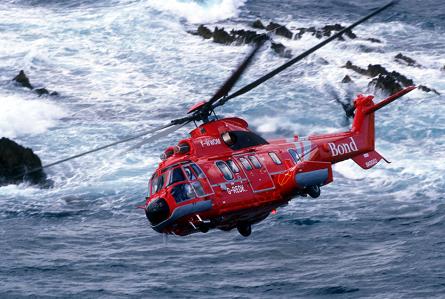European safety authorities have ordered immediate checks on Eurocopter Super Puma gearboxes after initial findings into the fatal North Sea crash on 1 April indicated a serious gearing failure brought the helicopter down.
The emergency directive from the European Aviation Safety Agency (EASA) covers both the AS332L2 - the type lost in the crash - as well as EC225LP variants of the Super Puma.
Preliminary findings of the inquiry, says EASA, suggest the accident is "connected with a degradation" of the epicyclic module of the main gearbox.
"In the light of this information the detection of any contamination of the main gearbox is of utmost importance as a precautionary measure," it adds.
Operators of AS332L2s need to check the magnetic plug of the main gearbox's epicyclic reduction gear module daily, and ensure that correct maintenance has been applied in case of the discovery of any particle on the plug.
If particles were detected during the previous 200 flight hours without a complete maintenance check, it says, the epicyclic module must be disassembled and inspected.
Companies operating the EC225LP must disassemble and inspect this module each time particles are detected on the magnetic plug, and comply with a similar 200-hour historical check.
|
|
|---|
© Eurocopter |
The directive is effective immediately. All 16 personnel on board the crashed Super Puma were killed after the gearbox failure which was followed by detachment of the rotor head and main rotor blades.
Eurocopter has issued an alert service bulletin to all AS332L2 operators following the release of the initial Air Accidents Investigation Branch report into the accident.
The manufacturer describes the measure as "precautionary" and adds: "We are committed to working closely with the regulatory authorities, investigators, and operators and customers to implement any required operational and maintenance procedures.
"At Eurocopter, safety is and has always been the number one priority."
It says that 83 AS332L2 helicopters are in service with 20 operators around the world, and have collectively accumulated over 3 million flight hours.
Source: Flight International

















